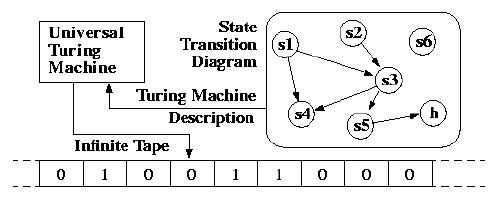- (1) Algorithmic & (2) Non-Algorithmic
(2) These cannot be solved using rules or a series of steps. e.g. who would win in a fight between batman and superman
- (1) Finite & (2) Infinite
(2) Infinite set of inputs and are not necessarily solvable.
- (1) Computable & (2) Non-Computable
(2) Where there is not an algorithm that exists that can solve a computer-based problem.
- (1) Decidable & (2) Undecidable
(2) A decision problem that is non-computable. e.g. "This statement is false."
- (1) Tractable & (2) Intractable
(2) A problem for which no reasonable (Polynomial) time solution has been found. e.g. Travelling Salesman Problem.
Heuristic Approach
This uses the know-how and experience to make guesses which help solve an intractable algorithmic problem in reasonable (polynomial) time. e.g. 'common sense'










